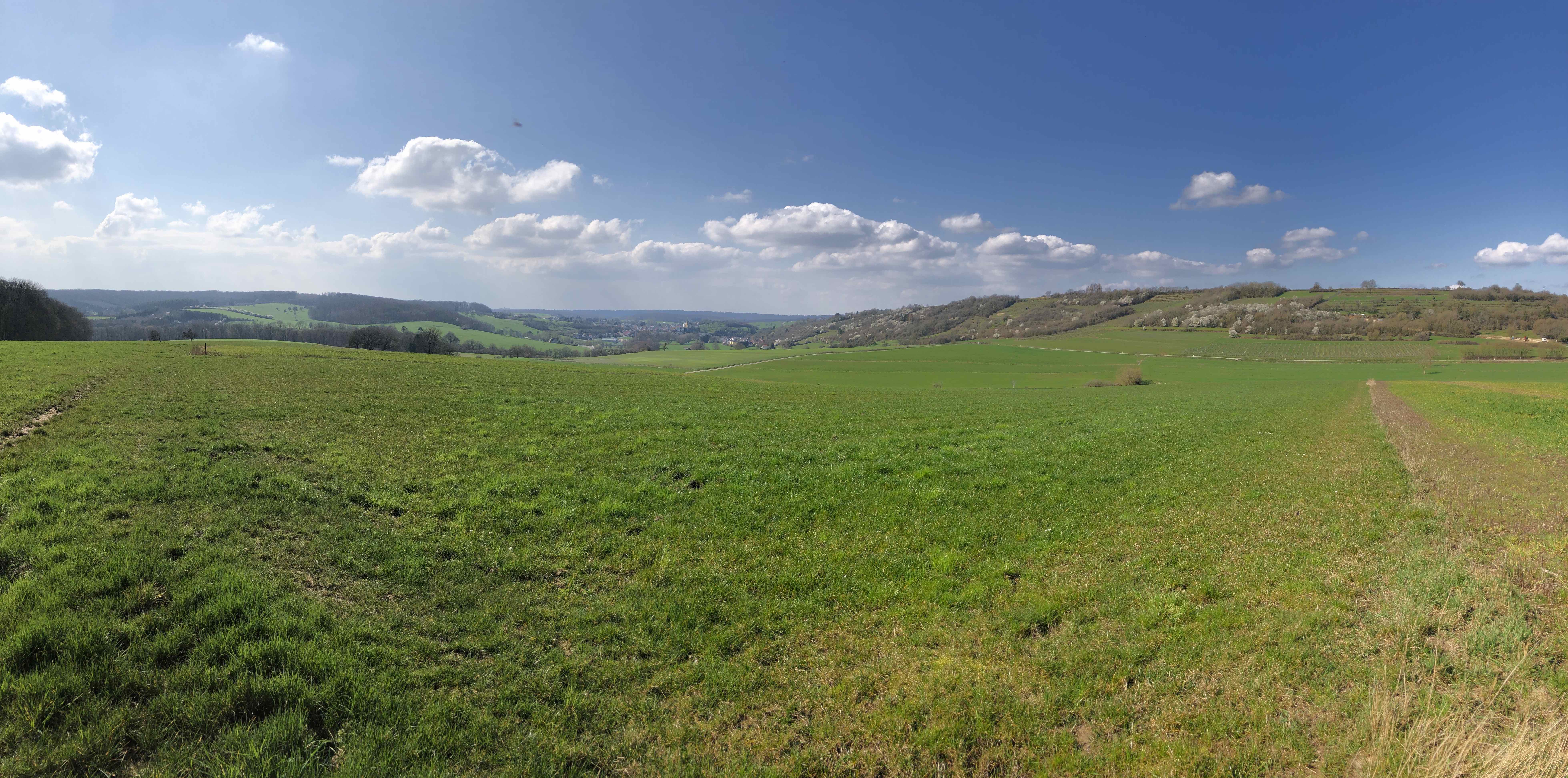| Structural element or biotope | 1962 | 1999 | Difference absolute | Difference relative |
| Punctual elements | ||||
| Solitary trees | 7648 | 3455 | -4193 | -55 % |
| Tree groups | 639 | 581 | -58 | -9 % |
| Linear elements | ||||
| Hedges and rows of trees | 949 km | 679 km | -270 km | -28 % |
| Surface elements | ||||
| Wet meadows, wetlands, reeds, moors | 1473 ha | 268 ha | -1205 ha | -82 % |
| Dry grassland, heath | 617 ha | 401 ha | -216 ha | -35 % |
| Meadow orchards, fruit tree cultures | 1766 ha | 742 ha | -1024 ha | -58 % |
(Parts of the country were examined. Data from: Rapport de l’Observatoire de l’environnement naturel 2009, Ministère du Développement durable et des Infrastructures, Département environnement)
The intensification of agriculture, but also the generally very high land consumption in Luxembourg has resulted in the disappearance of more and more structures in recent decades. The landscape has been cleared to create larger farming units, with hedges, field margins and copses being removed. However, these serve as nesting sites for many birds and are used as perches. They also serve as guiding structures for bats to orientate themselves during their hunting flights. The more frequent and earlier mowing in a more intensively used grassland also reduces the quality of the habitat. Intensive fertilisation and mowing cause many plant species to disappear, and thus the insects which depend on them. Turning the grassland over with subsequent sowing of particularly high-yielding grass species further intensifies this effect. The low biodiversity of the vegetation results in poorer conditions for all animals, whether insects or small mammals, that depend on it for food. This is due to the fact that in monocultures there is only one species, which does not necessarily cover the needs of the different species. Particularly highly specialised species cannot survive if their specific food plant is not present. But also less demanding species have a harder time in these cultures, because all plants offer the same food at the same time and this food also disappears at the same time when mowing takes place. In addition, many plants do not even flower because the intervals between mowing dates are too short. This drastically reduces the availability for flower-visiting insects. Another development that has a negative impact on many species is the conversion of permanent grassland into arable land. Especially for maize cultivation, meadows and pastures are converted into fields where accessibility to the terrain is easy. As a result, the habitat grassland disappears completely.
Due to the loss of structures such as hedges and individual trees in the landscape, many bird species, including the two native shrike species, lose perching opportunities. In addition, these structures also serve as breeding groves for these species, so that this function is lost as well.
However, not only the intensification of use leads to a deterioration of the conditions for open land species, but also the complete abandonment of use changes the habitat negatively. Especially meadow orchards or pastures in difficult-to-access locations are abandoned because maintenance is costly, as it is often not possible to work with machines. As a result, these habitats are lost for little owls and wrynecks, among others, as they can no longer hunt in overgrown areas or reach their important food sources on the ground. The abandonment of tree maintenance also means that nesting opportunities for cavity-nesting birds disappear. Old trees die earlier if they are not maintained and without replacements by new plantings, potential habitat trees are missing.
In addition to hunting areas in the open countryside, bats also need roosts for the different phases in the year. The two target species of Life Bats&Birds, the greater horseshoe bat and Geoffroy’s bat, prefer attics of buildings in this country. These must be large enough to have different temperature levels and be easily accessible to the bats from the outside. If these entrances are closed, the rooms are tightly insulated, converted or are accessible to predators such as martens or raccoons, this clearly has negative effects on the bats, for whom the buildings are then no longer usable. Wood preservatives can also lead to poisoning of the animals, which can result in infertility, among other things. Guiding structures are also important for bats, which they can use to orient themselves during their hunting flights. This also includes wooded areas along watercourses, which are very interesting for bats because of their rich insect populations.

